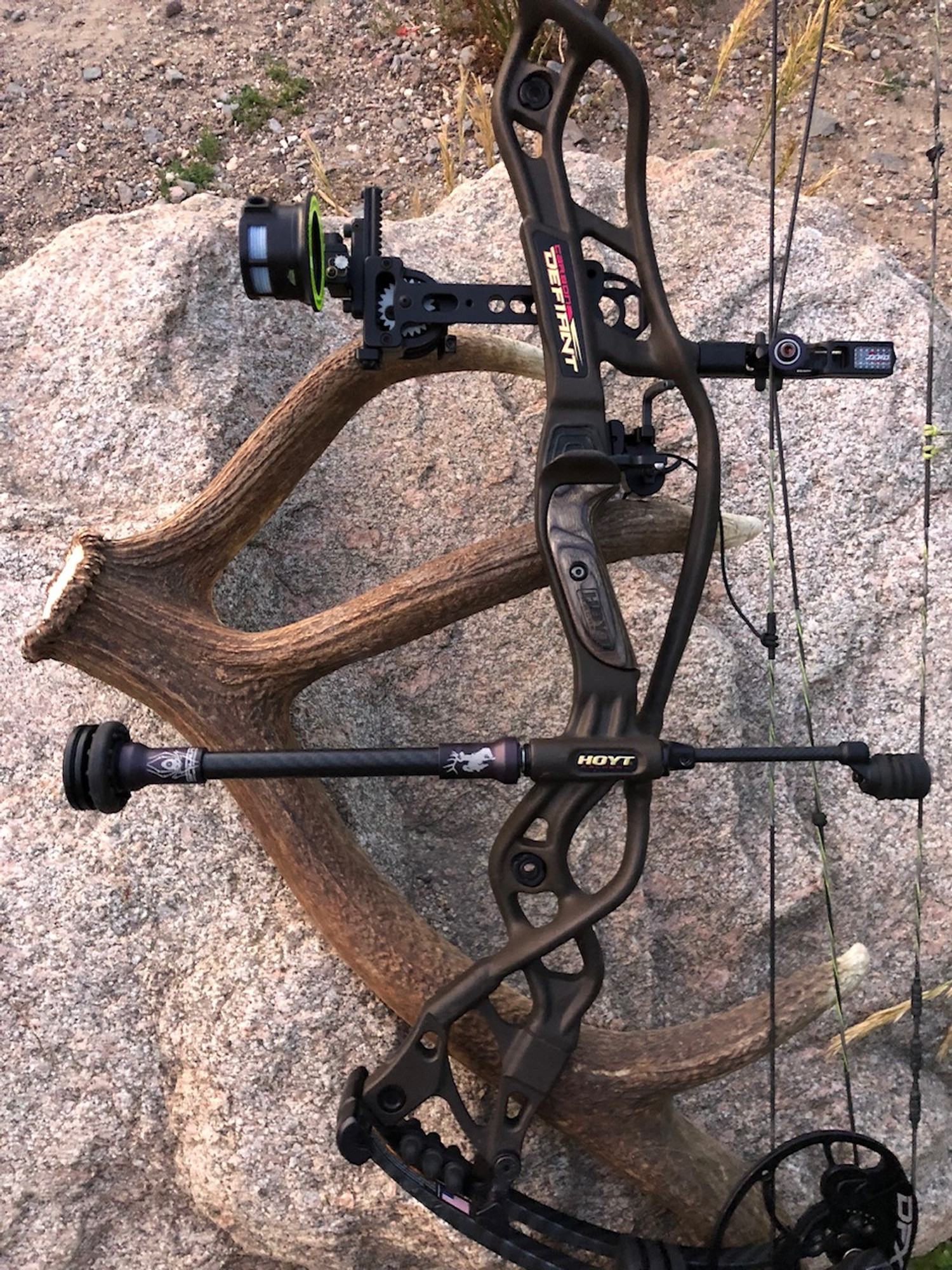Maximizing Your Archery Efficiency With the Right Substance Bow Stabilizer: an Extensive Introduction
One vital yet often-overlooked part in improving precision is the compound bow stabilizer. By comprehending the nuances of picking and maximizing a compound bow stabilizer, archers can adjust their equipment to raise their capturing experience to new levels of effectiveness and control.
Significance of Bow Stabilizers in Archery

Furthermore, bow stabilizers assist in balancing the weight distribution of the bow, which can improve the archer's stability while shooting and intending. By including weight to the front of the bow, stabilizers can reduce the amount of torque experienced upon launch, causing a smoother and much more regulated shot - compound bow stabilizer. This weight circulation also assists in holding the bow consistent for a longer duration, allowing the archer to aim a lot more properly
Kinds Of Compound Bow Stabilizers
When thinking about the numerous kinds of compound bow stabilizers available, it is necessary to understand their distinct functions and functions to figure out one of the most suitable option for optimizing archery performance. The most typical kinds of substance bow stabilizers include sidebar stabilizers, front stabilizers, and back stabilizers. Sidebar stabilizers affix to the sides of the riser and assistance in balancing the bow throughout the intending process. Front stabilizers, additionally referred to as lengthy poles, are connected to the front of the riser and aid in soaking up and minimizing any kind of vibrations brought on by the launch of the arrowhead, hence enhancing accuracy. Back stabilizers, additionally called rear stabilizers, are installed to the rear of the bow and assist in counterbalancing the weight of other devices, causing improved security and steady intending. Furthermore, some stabilizers include flexible weights that allow archers to fine-tune the equilibrium and feel of their bows according to their preferences, making them flexible options for archery enthusiasts of all levels.
Variables to Take Into Consideration When Selecting
In assessing substance bow stabilizers, comprehending the distinct features and functions of each kind is critical for making a notified decision on the most suitable alternative to enhance archery performance. When selecting a stabilizer, one should take into consideration the weight of the stabilizer itself. While a heavier stabilizer can provide even more stability by decreasing the bow's motion, it might additionally cause tiredness during long shooting sessions. Equilibrium is one more crucial variable to consider. The stabilizer's length and style substantially influence the bow's balance, influencing the shooter's ability to hold steady purpose. Furthermore, the product of the stabilizer can influence its performance. Carbon fiber stabilizers are lightweight and take in resonances well, enhancing precision. The number and adjustability of dampeners on the stabilizer can fine-tune its performance by lowering noise and shock upon launch. By very carefully examining these elements, archers can select a compound bow stabilizer that straightens with their shooting style and optimizes their total performance on the archery range.
Setup and Change Tips
For optimal performance and precision in archery, grasping the setup and modification of your bow stabilizer is crucial. Proper installation starts with connecting the stabilizer to the bow's riser, ensuring it is securely safeguarded. The majority of stabilizers include installing equipment for simple installment, however it's critical to comply with the maker's standards for the specific design you have. Once my sources attached, changing the stabilizer includes locating the appropriate balance in between weight circulation and size. Trying out different mixes up until you attain the preferred feeling and stability.
When readjusting the stabilizer, start with small incremental modifications instead than radical adjustments. Pay attention to exactly how the bow reacts to modifications in stabilizer setups and make changes as necessary. Routinely inspect the stabilizer's visit site rigidity and general problem to guarantee it proceeds to work efficiently.
Maintenance and Care Guidelines

It is likewise essential to save your bow with the stabilizer in a safe and secure and secure location when not in usage. Complying with these maintenance and treatment guidelines will certainly help you obtain the most out of your bow stabilizer and enhance your total archery efficiency.
Conclusion
Finally, selecting the appropriate compound bow stabilizer is essential for making the most of archery efficiency. Comprehending the importance, types, factors to think about, installation and modification tips, in addition to upkeep and care standards can considerably influence one's accuracy and uniformity in capturing. By selecting a stabilizer that matches individual requirements and choices, archers can enhance their general efficiency and achieve much better outcomes on the range or in competitors.
Bow stabilizers play a crucial function in boosting an archer's accuracy and consistency by lowering resonances and stabilizing click the bow during the release of an arrowhead - compound bow stabilizer.In addition, bow stabilizers help in balancing the weight circulation of the bow, which can boost the archer's stability while firing and intending. The most common types of compound bow stabilizers consist of sidebar stabilizers, front stabilizers, and back stabilizers. Back stabilizers, additionally called back stabilizers, are mounted to the back of the bow and assist in reversing the weight of various other devices, resulting in boosted stability and steady aiming. When selecting a stabilizer, one have to consider the weight of the stabilizer itself